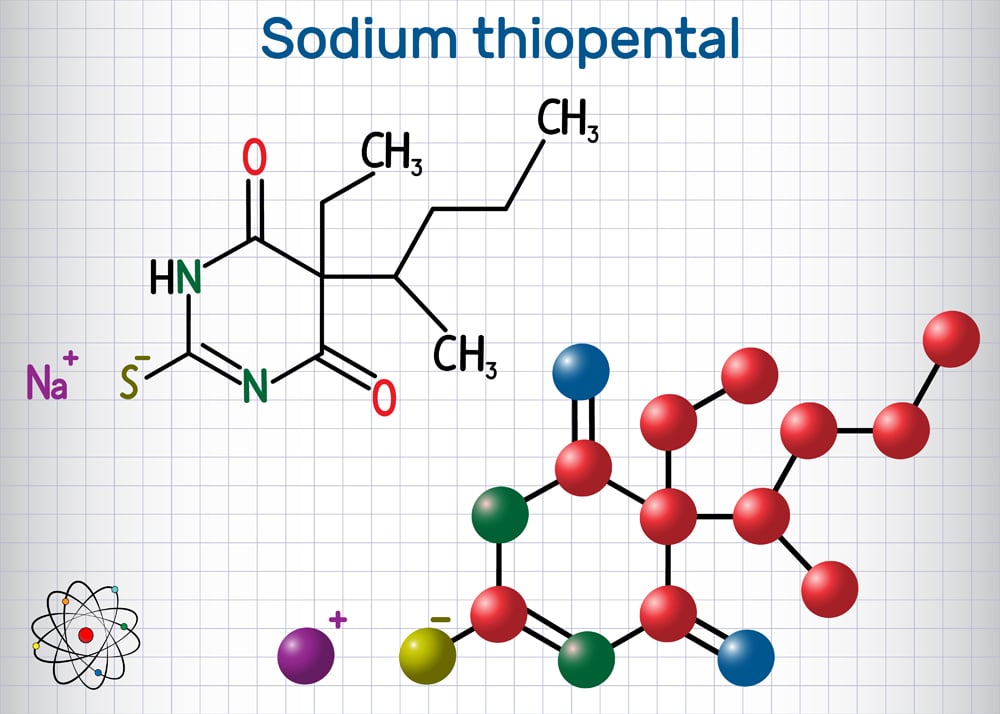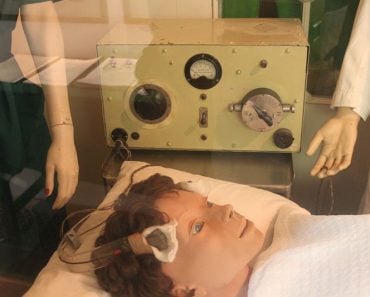Table of Contents (click to expand)
Sodium thiopental or Sodium Pentothal is commonly known as truth serum. It is an anesthetic. It works by decreasing the metabolic activity of the brain, thereby making it hard to think and further, lie. But, does it actually guarantee the truth?
As kids, we’re taught not to lie. We’re told that it is bad and that no one appreciates being lied to. However, true as that may be, most of us still lie from time to time. We lie for noble reasons, to keep our best friend’s secrets or cover for a sibling, and we lie to get away with something, such as meeting a significant other without your parents finding out. People lie to cover their mistakes, commit fraud, or pull off cons, like the infamous Tinder Swindler.
There are many ways to catch a liar. Inconsistent stories, facial cues or behavioral changes can all point out a liar. Or… you could just use a truth serum!
You may have heard of Hollywood’s favorite truth serum—sodium thiopental. The serum has been used in movies and TV shows about spies, espionage, and secret government agents such as Stormbreaker, Meet the Fockers, and Person of Interest.
The drug is injected into a person’s bloodstream and the truth comes flying out… but that’s not how it really works.
Recommended Video for you:
What Is Sodium Thiopental?
Sodium thiopental or Sodium Pentothal is an anesthetic, which means that it reduces pain sensitivity. It was developed by Ernest H. Volwiler and Donalee L. Tabern, who worked for Abbot Laboratories. It was first used on humans in 1934, and in its initial stages, eye surgeons found it very handy, as it removed the need for disruptive face masks to anesthetize patients. As it was easy to use, had a fast post-operative recovery and didn’t cause much nausea, it gained popularity quickly. After administering it to someone, they would fall asleep quickly within a minute and wake up after about 15 minutes.
It was also safe to use on pregnant women, as it didn’t affect the fetus.

Doctors also administered patients with Sodium Pentothal as a ‘truth serum’ to get honest replies from them about their symptoms. This alternative use began in 1931 when a British physician J. Stephen Horsley observed that his patients appeared more relaxed under its influence and were less restrictive about their private thoughts or tales.
That revelation led to its use in psychiatry. Patients with subjective experiences of pain were administered this ‘truth serum’ to loosen them up and make them more communicative about how they were feeling. It would help to calm them down and relax, so they wouldn’t think twice before answering the doctor’s questions. This helpful tool is called Sodium Pentothal Hypnosis.
Soon, government intelligence units began using such barbiturates for different purposes. The CIA frequently used it to extract information from terrorists. In 1951, an operation formerly known as Operation Bluebird was changed to Operation Artichoke. It was an offensive program to develop drugs like Sodium Pentothal for use in interrogations. This secret-spilling drug would indulge prisoners or terrorists to let out their most guarded information.
Apart from these medicinal uses, it is also used for capital punishment. Very large doses are given to prisoners to put them in a coma so they don’t feel any pain.
How Does Sodium Pentothal Affect The Body?
This sinister serum is a barbiturate, a drug type that has many uses. They have been used to treat epilepsy, improve sleep, help with anxiety and as an anesthetic.
Barbiturates relax the brain by decreasing its metabolic activity. Our brain cells — neurons — pass information across the nervous system using electricity. Barbiturates suppress the neurons’ electrical activity so the neurons don’t expend energy in transmitting the information. As the brain’s energy requirements reduce, its metabolic levels dip.
Barbiturates do this by blocking specific receptors on the neurons. There are receptors called GABA (Gamma-aminobutyric acid) receptors that receive neurotransmitter molecules, which aid in passing cellular information from neuron to neuron. By binding to the GABA receptors, barbiturates lower brain activity and cerebral metabolism. That’s why this drug also helps in reducing pain sensitivity. It lowers the pace at which signals travel to the brain from the spinal cord.
When we lie, we have to think to make up false scenarios and create stories. This requires more brain function than telling the truth, so relaxing the brain makes it harder to come up with lies.
It’s similar to when we get the courage to drunk text an ex after a few drinks. We know it’s not always the right choice, but we do it because alcohol stops our brains from thinking straight. The truth serum works on the same general principle; it breaks our guard down, causing potential liars to spill the beans.
How Well Does Sodium Pentothal Work?
The “truth serum” doesn’t force you to tell the truth, but instead urges you to let it out. However, trained liars like government spies, such as James Bond, won’t succumb to its effects so easily.
Sodium Pentothal makes it harder to think, but special agents and spies are trained to resist its effects. In 1950, the CIA began Operation Bluebird. Before it changed names to Operation Artichoke, its purpose was to train U.S. servicemen to withstand and fight drug-based interrogations. They would brutally condition their agents by giving them drugs like sodium pentothal and morphine. The agents were subjected to addiction, after which they had to go through withdrawal. This would, experts thought, help develop a resistance to the drug.

Another problem is that under its influence, you may become very suggestible. As your brain doesn’t want to think, a person may say whatever they think the interrogator wants to hear. This makes such statements quite inadmissible, especially in a court of law. That’s why using truth serums while taking someone statement (in a legal context) invalidates whatever admissions they make.
Conclusion
Unfortunately, truth serums aren’t real, though that may be good news to some. If there is a truth serum, perhaps no one is letting the truth out about it! Imagine the consequences if there was such a special ingredient out in the world…

There are also other ways to spot lies, such as polygraph tests, commonly called lie detector tests. You may have also come across them on TV shows and movies. These tests measure biological properties like heart rate, blood pressure, and breathing rate to determine whether someone is telling the truth… we’ll have to talk about those in another article.
For now, you can rest in peace knowing that there is no perfect method for extracting pure truth!
References (click to expand)
- Kochanek, P. M., Adelson, P. D., Ashwal, S., Bell, M. J., Bratton, S., Carson, S., … Warden, C. R. (2012, January). Chapter 10. Cerebrospinal fluid drainage. Pediatric Critical Care Medicine. Ovid Technologies (Wolters Kluwer Health).
- Kassell, N. F., Hitchon, P. W., Gerk, M. K., Sokoll, M. D., & Hill, T. R. (1980, December). Alterations in Cerebral Blood Flow, Oxygen Metabolism, and Electrical Activity Produced by High Dose Sodium Thiopental. Neurosurgery. Ovid Technologies (Wolters Kluwer Health).
- Sodium thiopental. The American Chemical Society
- Sodium Thiopental - MOTM 2007. chm.bris.ac.uk
- Truth Serums - www.chm.bris.ac.uk
- The Truth About Lie Detectors (aka Polygraph Tests). The American Psychological Association
- Allen, M. J., Sabir, S., & Sharma, S. (2022). GABA Receptor. StatPearls Treasure Island (FL).
- Orkaby, A., & Desai, S. P. (2021, July 1). The Death of Sodium Pentothal: The Rise and Fall of an Anesthetic Turned Lethal. Journal of the History of Medicine and Allied Sciences. Oxford University Press (OUP).













